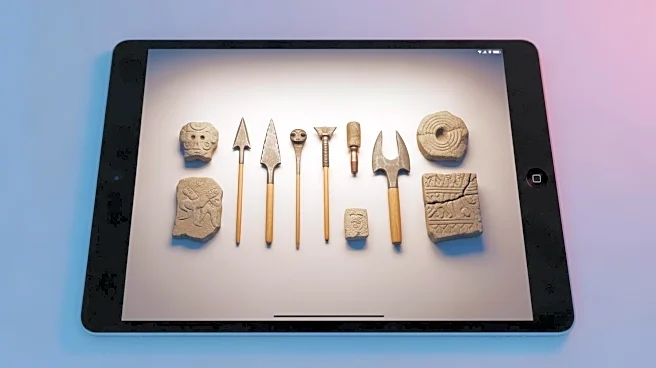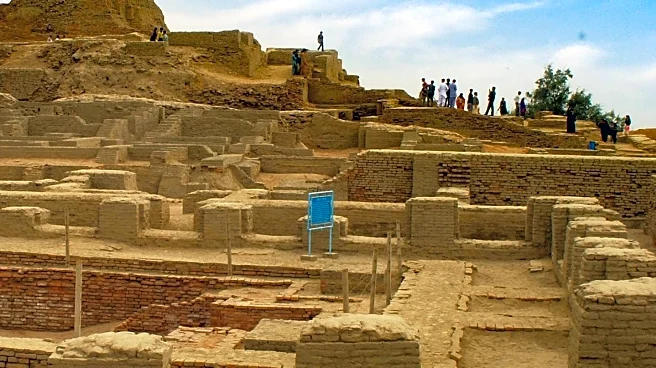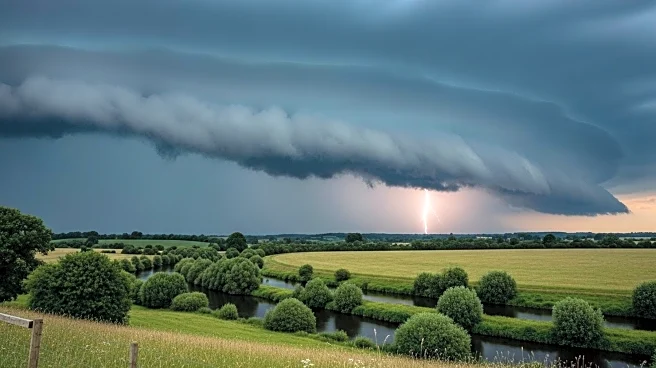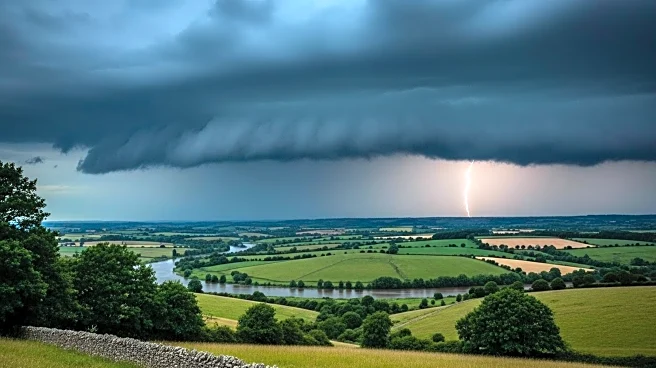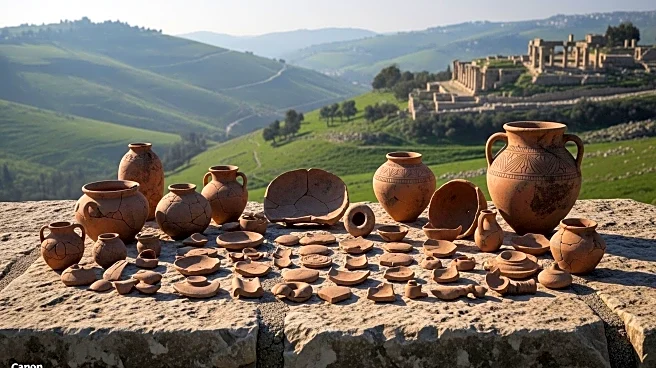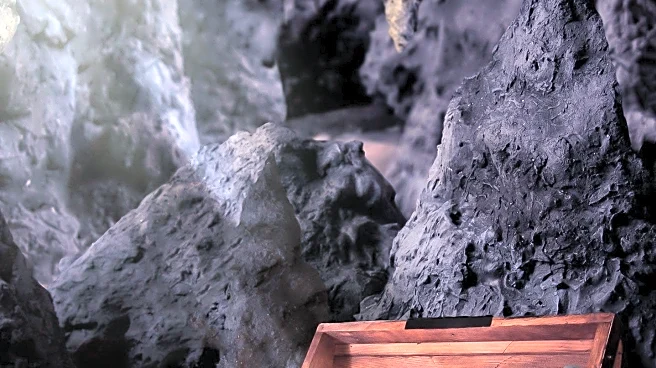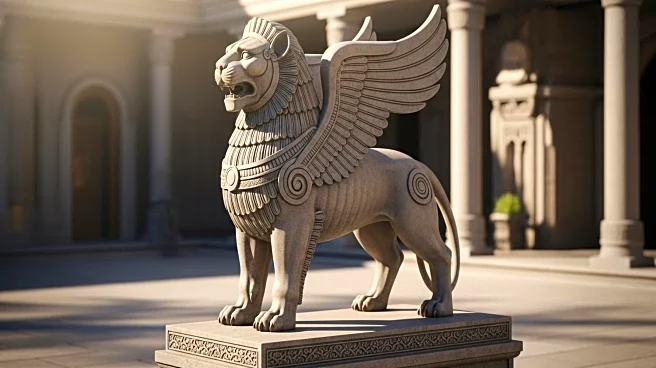What is the story about?
What's Happening?
A study of animal bones from prehistoric sites in Wiltshire and the Thames Valley has revealed that people in the British Bronze Age gathered for large meat feasts. Researchers found evidence of extensive transportation of pigs and cattle to these sites, indicating a tradition of communal feasting. The study, led by Richard Madgwick from Cardiff University, suggests these gatherings were a response to climatic and economic instability, serving to strengthen community ties.
Why It's Important?
The findings provide insight into social practices during the Bronze Age, highlighting how communities adapted to environmental and economic challenges. Understanding these historical responses can inform current societal strategies for dealing with similar issues. The study also advances archaeological methods, using multi-isotope analysis to trace the origins of animals, which could be applied to other historical research.
Beyond the Headlines
The study raises questions about the cultural significance of feasting and its role in community cohesion. It suggests that such practices may have been crucial in maintaining social order during times of crisis. The research also touches on the evolution of dietary preferences and trade networks, as evidenced by the movement of livestock across regions.
AI Generated Content
Do you find this article useful?





